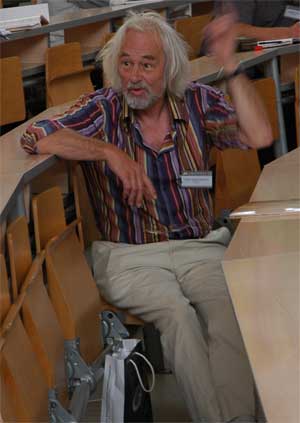LOESSFEST'09 | Aug. 31st – Sept. 3rd, 2009 |Novi Sad-Serbia
Climatic Signature and Chronology of Last Interglacial and Early Glacial Loess-Palaeosol Successions of Central and North-Western Europe: Proxy-Correlation with Marine and Greenland Data
Haesaerts, P.1, Gerasimenko, N.2, Pirson, S.1
1Royal Belgian Institute of Natural Sciences, Vautierstraat 29, B-1000 Brussels, Belgium
1Earth Sciences and Geomorphology Department, National Taras Shevchenko University of Kyiv, Ukraine
 During the last decade relevant data on palaeoenvironment were gained for
the Late Pleistocene loess-palaeosol successions of Central and North-Western
Europe based on detailed pedostratigraphic and palynological records. Within
this large geographic area, key-sections were selected, respectively in Central
Ukraine, in the East Carpathian Area and in Middle Belgium, allowing the establishment
of a well documented correlative scheme linking these three regions
for the period of time from the last interglacial to the early pleniglacial. Each regional
sequence records a complex succession of nine episodes of soil development
including brown forest soil with Bt horizon, grey forest soil with Bth horizon,
chernozem, brown boreal soil and weak humiferous soil. Moreover, the
palynological data gathered in Central Ukraine for this pedostratigraphic succession
shows a consistent signature of the vegetation with regard to the soil development,
ranging from broad-leaved forest to dry forest-steppe, It allows for the
first time, to correlate vegetation development phases from the loess-palaeosol sequences
with those of long lacustrine reference pollen sequences of Europe, as
well as with the marine and Greenland records. This correlative scheme not only
demonstrates the remarkable reproducibility of the high-resolution climatic signal
over long distance from the centre of the Russian Plain to the Atlantic Front, but
also leads to combine the pedostratigraphic records and palynological data within
a single structure on a large geographic scale.
During the last decade relevant data on palaeoenvironment were gained for
the Late Pleistocene loess-palaeosol successions of Central and North-Western
Europe based on detailed pedostratigraphic and palynological records. Within
this large geographic area, key-sections were selected, respectively in Central
Ukraine, in the East Carpathian Area and in Middle Belgium, allowing the establishment
of a well documented correlative scheme linking these three regions
for the period of time from the last interglacial to the early pleniglacial. Each regional
sequence records a complex succession of nine episodes of soil development
including brown forest soil with Bt horizon, grey forest soil with Bth horizon,
chernozem, brown boreal soil and weak humiferous soil. Moreover, the
palynological data gathered in Central Ukraine for this pedostratigraphic succession
shows a consistent signature of the vegetation with regard to the soil development,
ranging from broad-leaved forest to dry forest-steppe, It allows for the
first time, to correlate vegetation development phases from the loess-palaeosol sequences
with those of long lacustrine reference pollen sequences of Europe, as
well as with the marine and Greenland records. This correlative scheme not only
demonstrates the remarkable reproducibility of the high-resolution climatic signal
over long distance from the centre of the Russian Plain to the Atlantic Front, but
also leads to combine the pedostratigraphic records and palynological data within
a single structure on a large geographic scale.



